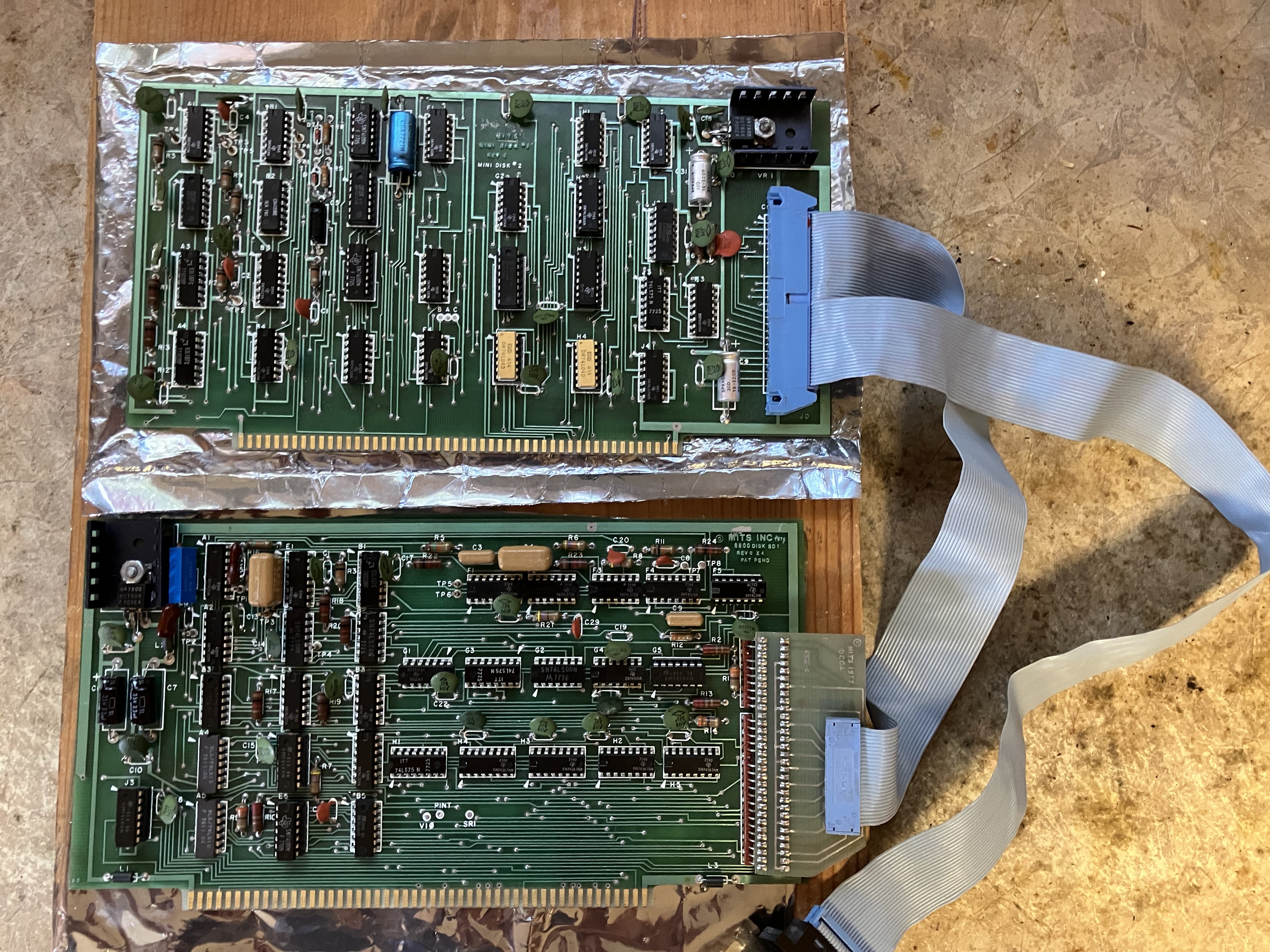Altair 8800 Disk Fun: Round and Round We Go?
You really only need one reason to climb yet another mountain, and that is of course, "because it is there!"
You really only need one reason to climb yet another mountain, and that is of course, "because it is there!"
To make the experience fit your profile, pick a username and tell us what interests you.
We found and based on your interests.

In this corner, consider if you will, the original MITS Altair 5.25 Mini Floppy Disk Controller Board Set, which only needed 57 integrated circuits, or thereabout, to more or less try to accomplish what Steve Wozniak would later achieve with just EIGHT, or something like that. Except that the Apple II design managed to eventually cram something like 143K onto a single-sided 5.25" floppy, whereas the "original" could only pull off around 70K or so. Yet when you get into the original design, there are a bunch of things that were both weird and wonderful about, it, which most people would never appreciate unless they had a chance to poke around an actual physical unit with an oscilloscope, or maybe even better yet a modern logic analyzer.
You see this thing is actually quite interesting! The original controller required so-called hard-sectored floppies, which used a total of 17 holes that were actually punched into the media, that the optical circuitry would detect not only the once per rotation index hole, but so also the additional holes that were punched, one for every sector. Then, rather than use software-controlled timing loops, or read track and sector data that later floppies simply recorded onto the media as a part of the header which of course preceded each data block, they actually used a mash-up of one-shots, flip-flops, latches, and counters to keep track of the current sector number, that is to say, by resetting an actual counter when the index hole is detected, and incrementing the very same counter when a sector hole is detected, and of course, checking for "overflow", etc., all in hardware. All pretty cool - and very expensive to implement at the time, because of the high parts count, that is to say - back in the day.
Yet you could do things - I think - like fire an interrupt (maybe), whenever you pass a sector hole, and then you could check the sector status register to see if "these were the droids that you were looking for", and if you were where you wanted to be; when you wanted to be there, you could then begin either reading or writing, as you saw fit.
Well, maybe. I don't know if anyone ever took advantage of THAT capability, but at least one YouTube channel that I was checking out claims that at best MITS Disk Basic could read or write maybe two sectors per rotation, even if the hardware was capable of reading a whole track at once. Nonetheless, I got as far as using a function generator to generate an 80 Hertz signal to simulate the 16 pulses per revolution part, whilst not worrying about the missing "index-pulse" which is supposed to appear between sectors fifteen and zero.
Yet now I was faced with a problem, and that was the problem of not having a working 5.25" drive on hand, and not wanting to take my chances on the insane ebay prices for USED 5.25" inch drive that might be AS-IS for parts or repair, (already have one of those) - and which might or might not be capable of reading all 17 holes on a hard-sectored floppy, that is if they will work at 300RPM, at 250K FM, not 500K MFM, and so-on. Even though many are "supposed to", if you can set the jumpers right. So, why not fake it, until you can make it, by trying something else altogether?
Yeah, I know there is an Arduino app. for what I am about to describe, but why not just try generating the missing sector pulses that a 3.5" disk won't give us, in hardware? Something like this might do the trick nicely, if we had a 160 Hz clock source that was synchronized with the disk, which could then be put through a divide by 32 and fed into this mess so as to make some fake signals for testing purposes.
Create an account to leave a comment. Already have an account? Log In.
Become a member to follow this project and never miss any updates